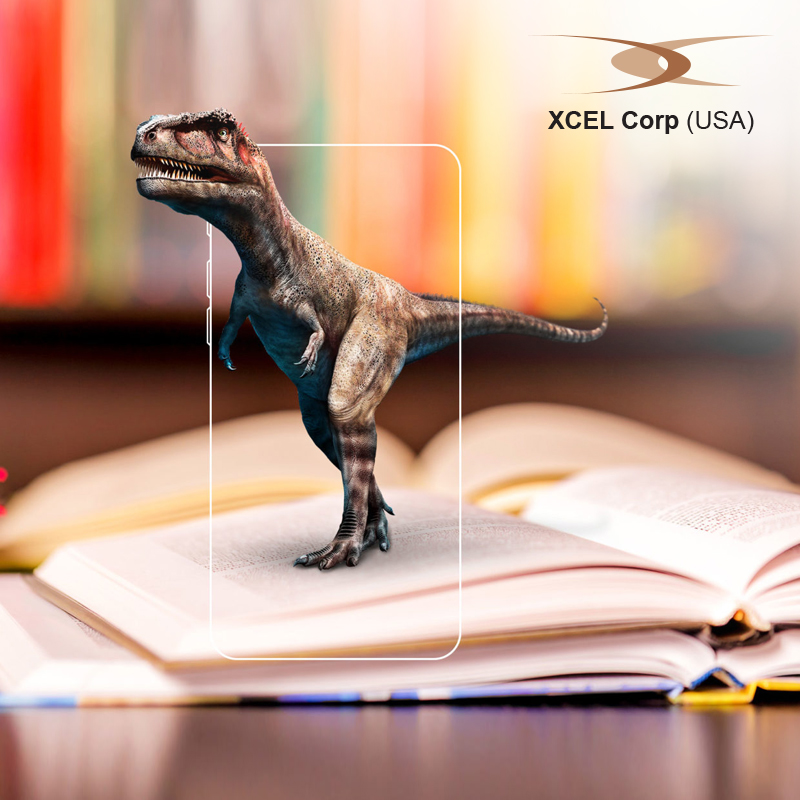
A whale splashes around without you having to get into the ocean or even spraying a droplet of water on you – a huge polar bear goes right past in a snow-filled environment around without giving you a second glance. These are some of the best and simplest examples of AR. Virtual objects are placed into a real-time environment, digitally creating an illusion of holographic content, created as a part of a physical world around you. Some digital elements are appended into the camera, even your smartphone, helping users gain greater experiences. Augmented Reality or AR is often confused with Virtual Reality or VR. AR allows you to immerse yourself in the artificial environment, while VR does not facilitate this immersion. Your surroundings are altered when digital images, objects, sounds, videos, and graphics are added creating a whole new artificial environment around you. When applied differently through a mobile app, your face could change into a cute kitten, or help you find a particular location on a map. Thus, mobile apps receive a high-level comprehension of digital videos and images, through embedded computer vision algorithms. An input received from the camera or another device such as smart glasses, executes an overlay simultaneously, consequently creating an illusion while superimposing virtual images over real-world objects and constructively engaging users with the virtual world.
Evolution of Augmented Reality
AR has come a long way since the 1968 wireframes and into our mobile phones today.
Here is a brief timeline of its evolution:
1968:
Ivan Sutherland the Father of Computer Graphics, created the Sketchpad. This computer program would allow users to create objects directly into the interface without having to code. Thus, the term Graphical User Interface evolved where graphical images were supplied into the computer with the aid of an external handheld object.
1990:
It would take nearly two decades of research to come up with AR systems, which are in close semblance to what we know of it today. Augmented Reality is a term that was coined by Boeing researcher Tom Caudell, who described digital displays experienced by aircraft operators and electricians. This was also the time when physical reality and virtual graphics would be blended.
Through the years, Sportvision was the first broadcast company to use AR where they would depict a marker over the fields. This would also be the earliest time that consumers would be exposed to augmented reality.
It was at the same time that NASA would use AR too, albeit to navigate the X-38 spacecraft.
2009:
By now, the development was so rapid that the average consumer could source the ARToolkit online. It was an open-source technology that would be utilized by many companies. As advancements in AR progressed, wearable technologies such as Microsoft HoloLens and Google Glass were innovated. Some industries, like the automobile sector, even found it extremely useful to build cars with efficiency. Another field that greatly benefited from AR was medicine, where anatomy lessons were easy to comprehend, as students got a closer look at the human body inside out, and in 3D.
2017:
The first AR-centric app to garner 650 million downloads was Pokémon Go in February 2017. Snapchat would also introduce their first AR driven app called World Lenses that would generate graphics using a rear-facing camera lens in real-time. Other social media brand members such as Instagram and Facebook also included AR filters akin to Snapchat. Handheld mobile phones such as the iPhone X and the iPhone 8 further enhanced AR to create more immersive experiences for the average consumer.
Future of AR:
Going by the current drifts, Augmented Reality has grown from merely being used for entertainment to be utilized in core business sectors for crucial activities. AR is most likely to be the hottest trend across industries, creating innovative ways of engagement. With limitless potential and power, AR won’t be confined to phones and tablets alone but will be functionally used in contact lenses and other wearables.
How does it work?
AR applies special markers using GPS within the phone to ascertain a location. Real-time augmentation happens when the overlaying is on a live feed, for example, sporting events.
There are four different types of AR:
Markerless AR:
Also known as location-based or position-based or simply GPS, the markerless AR is one of the most widely used applications that work alongside velocity meters, accelerometers, digital compasses and much more. These are in-built into the device to recognize your location based on the existing surrounding data. It is available across smartphones with location detection features that commonly map directions, find businesses located close by and much more.
Marker-based AR:
Popularly called Image Recognition, a QR / 2D code is used as a visual marker that is sensed only by the reader, to provide a result. The marker is differentiated from the real world object using a camera mounted on a device, that also contains marker-based applications without utilizing too much processing power. Content and information are overlaid when the position and orientation are calculated.
Projection-based AR:
Artificial light is projected on to real-world surfaces thus enabling human interaction. This communication is sensed by the projected light, which is then identified, to perform the users’ bidding. A differentiation between the expected and altered projection helps detect user interaction. Even holograms or three-dimensional interactive images rendered into mid-air are part of Projection-based augmented reality solutions.
Superimposition-based AR:
The original view of the object is either fully or partially replaced by a newer and enhanced view of the same object in Superimposition based AR. Because the application cannot replace the original view of an object with an augmented one without recognizing it, object recognition plays a vital role in superimposition-based augmented reality.
AR systems work with four key components, the hardware, software, remote server and the above working principles of augmented reality. The processor, sensors, input devices, and other displays form the hardware, while applications and programs responsible for generating the images using 3D form the software. The web cloud remote server plays a crucial role in the storage of these images.
XCEL Corp
At XCEL Corp we use some of the latest AR technologies to provide our customers with unique experiences through practical implementations. Our engineers harness the newest AR tools to provide convincing experiences and to design intuitive interfaces for end-users. XCEL Corp comes with a depth of expertise and experience, to provide clients with all-in-one AR solutions and designs.


